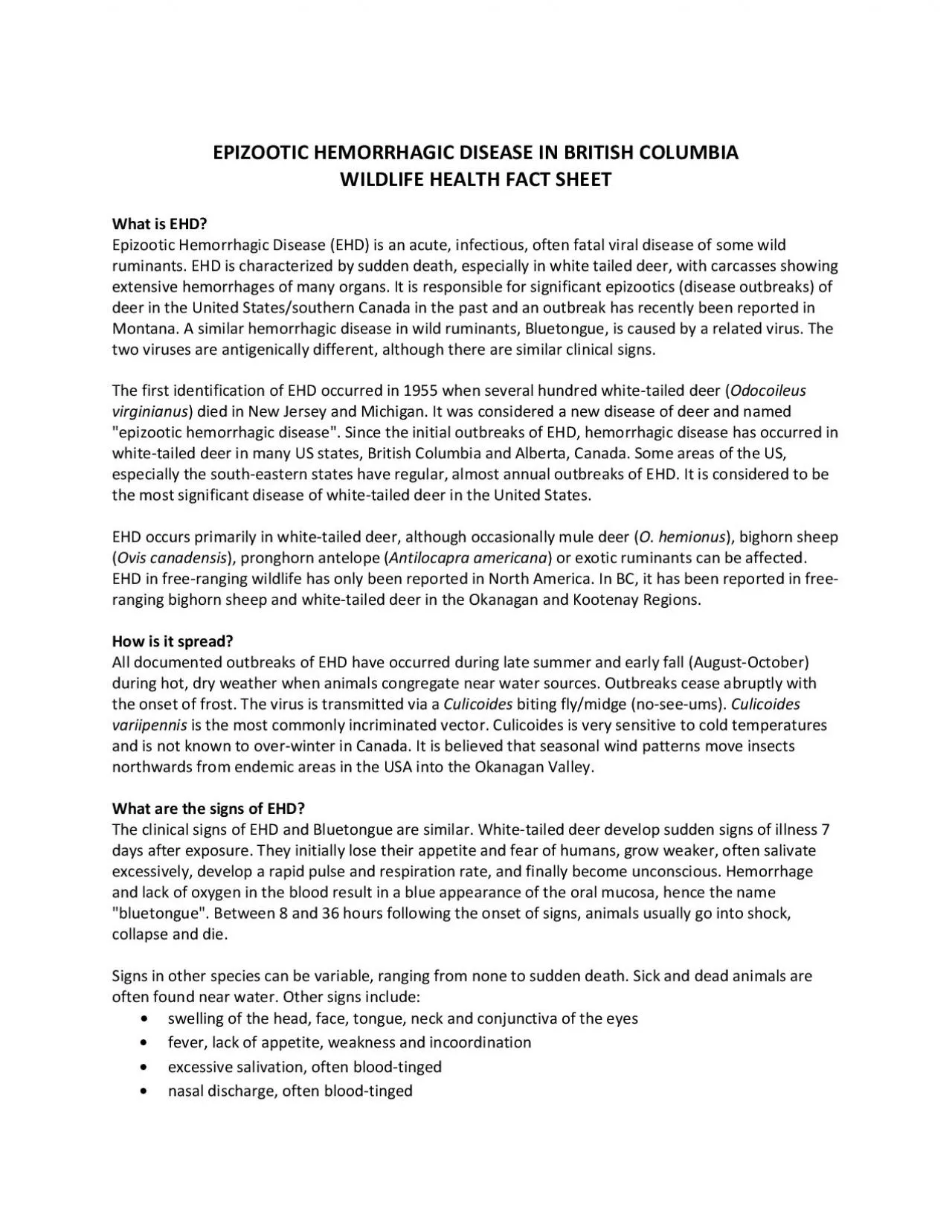

bloody diarrhea lameness extensive hemorrhages in many tissues including the skin gastrointestinal tract heart testicles ulcers or sores in the tissues of the mouth tongue and stomachs difficulty ID: 953456
Download Pdf The PPT/PDF document "EPIZOOTIC HEMORRHAGIC DISEASE IN BRITISH..." is the property of its rightful owner. Permission is granted to download and print the materials on this web site for personal, non-commercial use only, and to display it on your personal computer provided you do not modify the materials and that you retain all copyright notices contained in the materials. By downloading content from our website, you accept the terms of this agreement.
EPIZOOTIC HEMORRHAGIC DISEASE IN BRITISH COLUMBIAWILDLIFE HEALTH FACT SHEETWhat is EHD?Epizootic Hemorrhagic Disease (EHD) is an acute, infectious, often fatal viral disease of some wild ruminants. EHD is characterized by sudden death, especially in white tailed deer, with carcasses showing extensive hemorrhages of many organs. It is responsible for significant epizootics (disease outbreaks) of bloody diarrhea lameness extensive hemorrhages in many tissues including the skin, gastrointestinal tract, heart, testicles ulcers or sores in the tissues of the mouth, tongue and stomachs difficulty breathing, recumbency (lying down) overgrown/cracked hooves in recovered animals How can EHD be diagnosed?he diagnosis of EHD can be from the pattern of high mortality but requires the examination of intact, fresh carcasses. This is difficult in hot weather, but lab tests can verify if EHD virus is present in certain tissues. The following should be collected for analysis: blood collected with anticoagulant, spleen (best) lymph node, lung or bone marrow The post mortem and microscopic lesions of EHD are usually extensive hemorrhages ranging from pinpoint to massive in size, and involving many tissues, especially t
he heart, liver, spleen, kidney, lung, and intestinal tract. The hemorrhage is caused by interference with bloodclotting together with damage to blood vessel walls. How can it affect wildlifein British Columbia? Because of its very high mortality rate, EHD can have a significant effect on whitetailed deer populations, reducing numbers drastically. The EHD virus can infect domestic animals but rarely causes disease.EHD does not infect humans and the virus cannot be spread from carcasses to live deer. In handling deer, normal precautions should be taken; wear gloves and wash well after handling but while there is little risk to humans from the virus, it is never advisable to use meat from sick animals for consumption by humans or pets.What to do if you see an animal with signs of HD? To help diagnose this disease in wildlife, we request that the public report deer, bighorn sheep, and other ungulatesdisplaying any of the clinical signs of HD to the B.C. Wildlife Veterinarian at 250caeley.thacker@gov.bc.ca or the Wildlife Health Laboratory at 2507246. For additional information on HD or any other wildlife disease,please contact usor refer to our website atwww.gov.bc.ca/wildlifehealth Updated August 2021